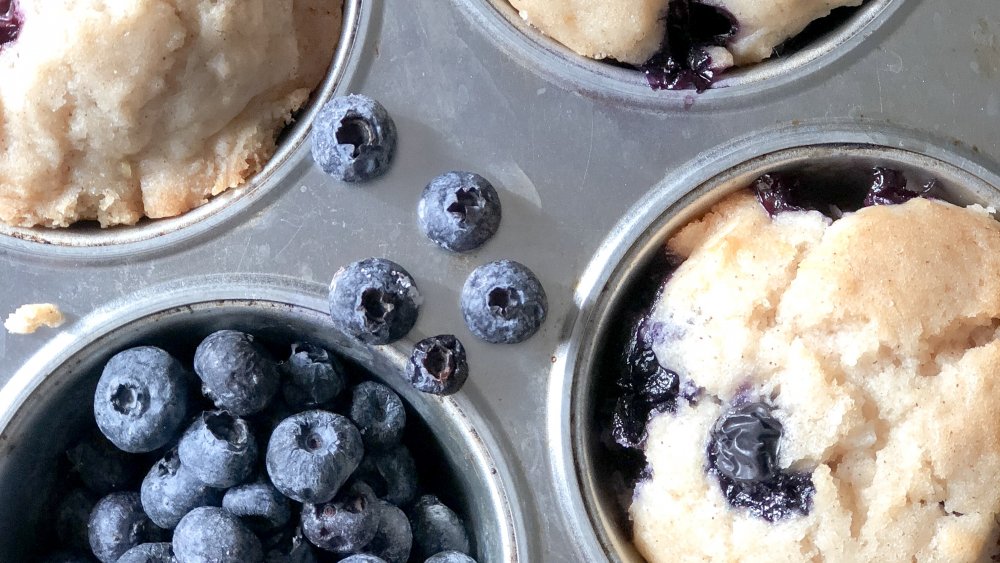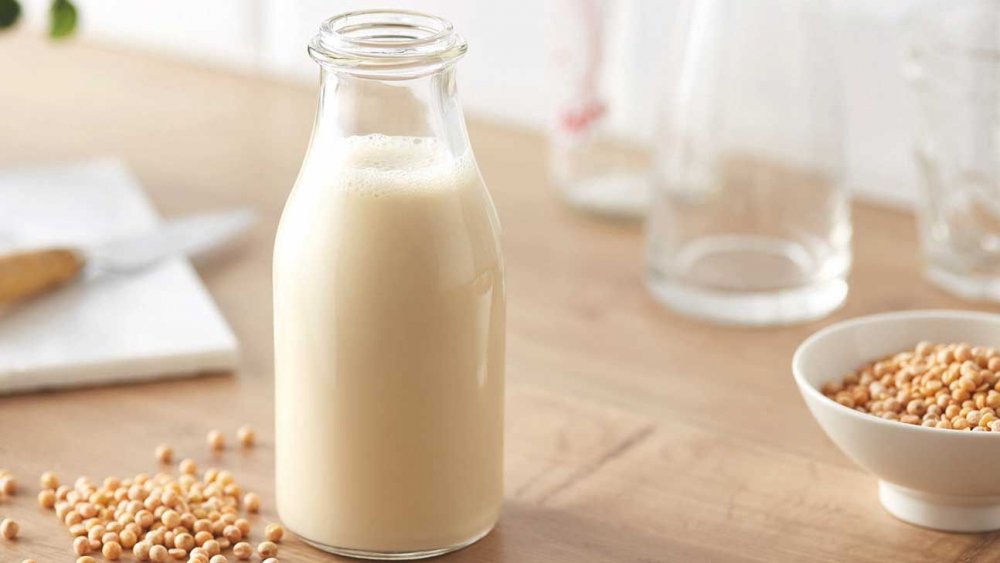This Ingredient Swap Makes Muffins Vegan-Friendly
Baking is an exercise in precision – just one misread fraction or misguided ingredient swap can drastically change the outcome of your muffin or cookie, and vegan baking is even more complicated. While there are vegan versions of most essential ingredients these days, many baked goods call for buttermilk, which does not have a plant-based alternative you can find in a store. And this isn't an ingredient you can afford to skip (in baking, you can't really just omit much – if you've tried anyway, we see you).
Buttermilk is a key ingredient in many baking recipes, from biscuits to banana bread. According to Southern Living, buttermilk was originally made by collecting the liquid leftover in a butter churn. It is full of cultures and healthy probiotics, and it stays fresh longer than most dairy products, making it a handy ingredient to keep in the fridge for all kinds of reasons.
But luckily, there's an easy vegan substitute for buttermilk that's made with ingredients you probably already have in your kitchen. All it takes is some non-dairy milk and a splash of apple cider vinegar, and you have yourself a perfectly leavened, perfectly moist vegan blueberry muffin (via My Darling Vegan). You don't even have to forgo any key ingredients, and, better yet, the taste of your muffins doesn't have to suffer.
Vegan substitute
Buttermilk has a sour taste that turns many people away from drinking it plain (though Bon Appetit claims that doing so is highly underrated) but creates a slightly tangy flavor when baked into cakes, cookies, or bread. Buttermilk is also a particularly acidic dairy product, so when mixed with alkaline ingredients, such as baking soda, it creates carbon dioxide, resulting in a light and fluffy muffin (via Livestrong). So how do you get buttermilk-like results from a dairy-free alternative? The answer is simpler than you might think. When you mix plant-based milk with apple cider vinegar (lemon juice works, too!), the milk curdles and takes on the sour taste of real buttermilk, as well as its leavening qualities. You can use a one-to-one ratio here, which makes it easy to turn any recipe vegan or dairy-free.
This vegan "buttermilk" is versatile and easy to use in most baking recipes, and making this ingredient itself takes minimal effort. The important part of the process is to allow the milk to curdle before adding it to your recipe – doing so will give your baked goods lift and texture similar to real buttermilk-based ones. My Darling Vegan recommends using soy milk, as it curdles better than other plant-based milks, but in a pinch, almond, coconut, or oat milk all work.

